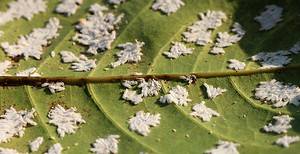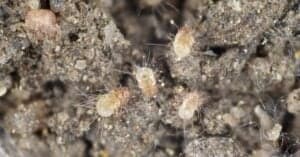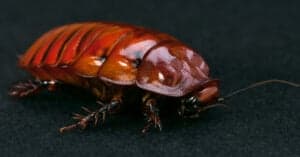New Mexico is a state known for its rich culture and history. It has some unique state symbols and a few more common ones. The New Mexico state animal is the black bear, a choice shared by three other U.S. states. The state nickname is ‘the land of enchantment’, an excellent choice for the state that’s home to the world’s largest balloon event.
New Mexico has mild year-round weather, with winter lows in the 20-30°s, and summer highs in the 80-90°s. The weather is usually comfortable, with little rain or humidity. The great state is home to some spicy chili peppers, gorgeous state parks, and an interesting choice for their state insect.
The official New Mexico state insect is the tarantula hawk wasp.
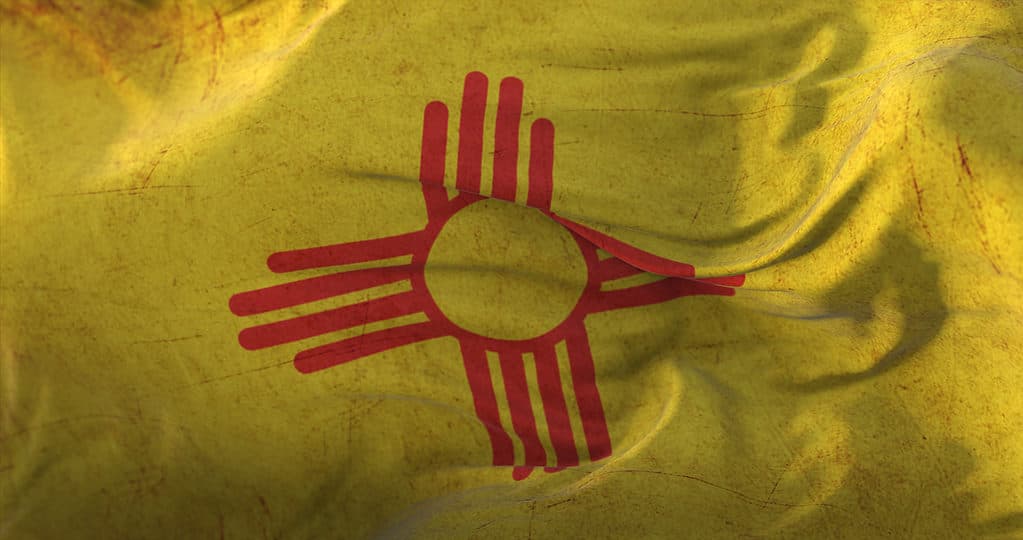
New Mexico has many state symbols, the most unique of which is the tarantula hawk wasp which is their state insect.
©iStock.com/Ianm35
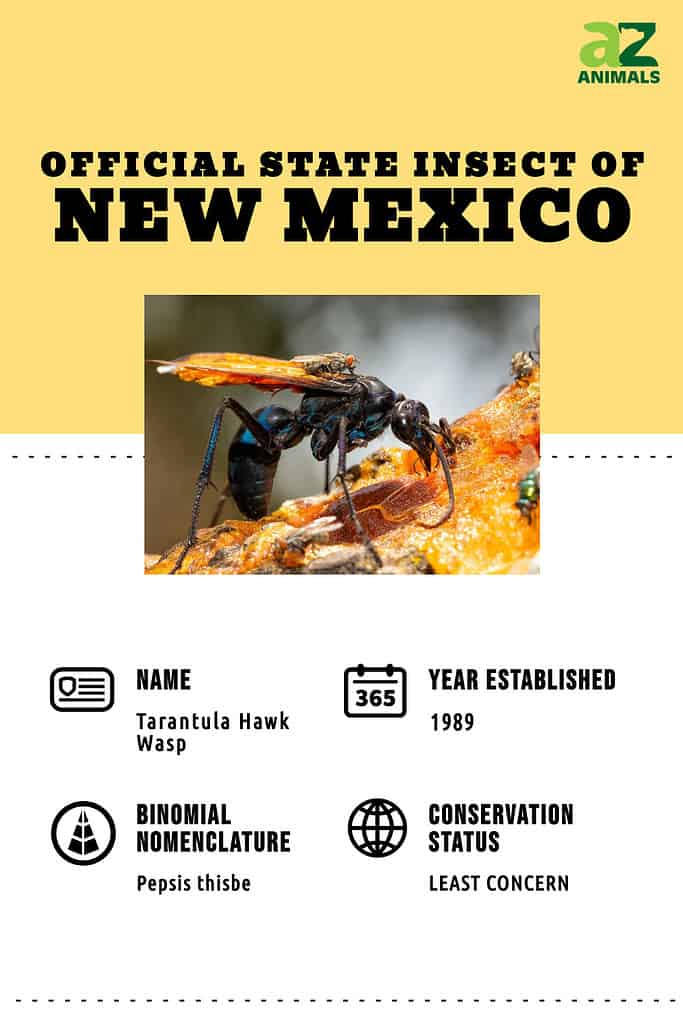
How Did New Mexico Choose the Tarantula Hawk Wasp?
A sixth-grade class in Edgewood is to thank for selecting the tarantula hawk wasp, also known as Pepsis thisbe, to be the state insect. In 1988 teacher Ruth Bradford created a unique project idea for her students. They were to research and reach out to local scientists for recommendations for the state insect. The scientists gave the students some great options, including the Jerusalem cricket, the black cactus longhorn beetle, the yucca moth, and the assassin bug.
After researching all of the different choices, the students ultimately narrowed it down to three options. Then they mailed the ballots to all of the elementary schools around the state, where fourth-, fifth-, and sixth-grade students selected their choice for state insect. The tarantula hawk wasp was the clear winner, with the yucca moth coming in second place.
After the winner was selected, Bradford went to State Representative Gary King for help, who introduced a bill to the house. This bill recommended the tarantula hawk wasp as the official state insect. The entire class was able to be present at the hearing. While one representative advocated strongly for the cockroach, the rest of the house passed the bill with little resistance. It was then unanimously approved by the Senate in April of 1989 and the tarantula hawk wasp became the state insect.
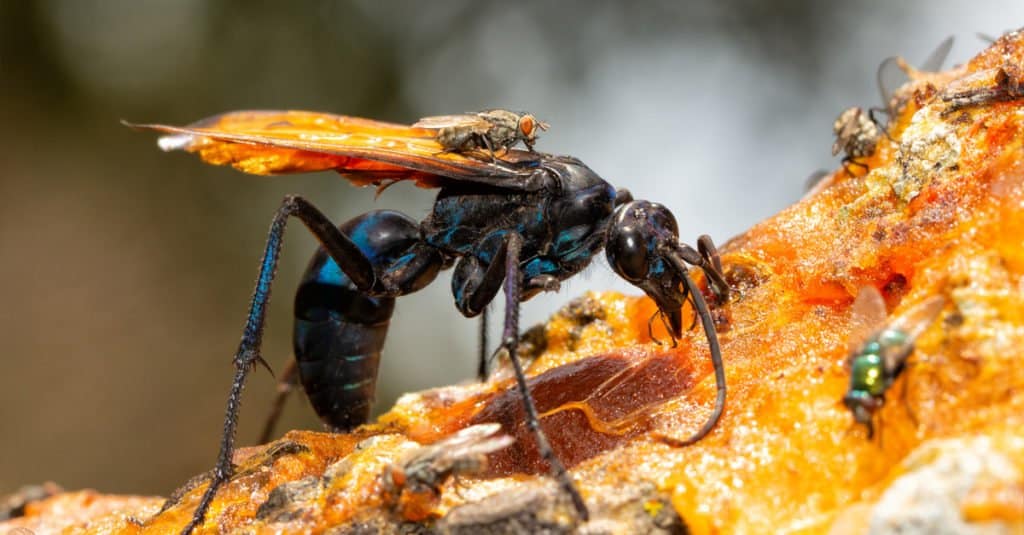
In April of 1989, the tarantula hawk wasp became the state insect of New Mexico.
©Sari ONeal/Shutterstock.com
Tarantula Hawk Wasp: Appearance and Behavior
Tarantula hawk wasps are some of the largest wasps in the United States. They average around 2 inches long but have been known to grow up to 3 ½ inches. They have black and blue bodies with large rust-colored wings and long legs. The females of this species are frightening, while the males don’t do very much at all. Both sexes feed on nectar for nutrition, but the females also hunt in a more interesting way (hint: it has to do with their name).
A Very Unique Diet
The tarantula hawk wasp gets its name because adult female wasps hunt tarantulas to feed their larvae. The wasps are fierce hunters, paralyzing the tarantulas with their stinger and carrying them back to their nest. From that first sting, the tarantula is permanently paralyzed.
Once the female tarantula hawk wasp carries it back to her burrow, she lays an egg inside its abdomen. She then covers the burrow and seals in the still-living spider. In a few days, the egg will hatch and the larva will feed on the flesh and fluids of the tarantula. Somehow, they know to avoid the vital organs for many weeks. This keeps the tarantula alive for as long as possible for a fresh daily meal for the larva.
After the first few weeks go by, the larva pupates inside the tarantula’s abdomen. Around this point, the tarantula is usually dead. It stays in the pupa for a few weeks as it changes into an adult wasp. After enough time passes, the young tarantula hawk wasp emerges from the abdomen of the long-dead tarantula and out of the burrow entirely. It will head out on its own, just as it began life because this is a solitary species of wasp.
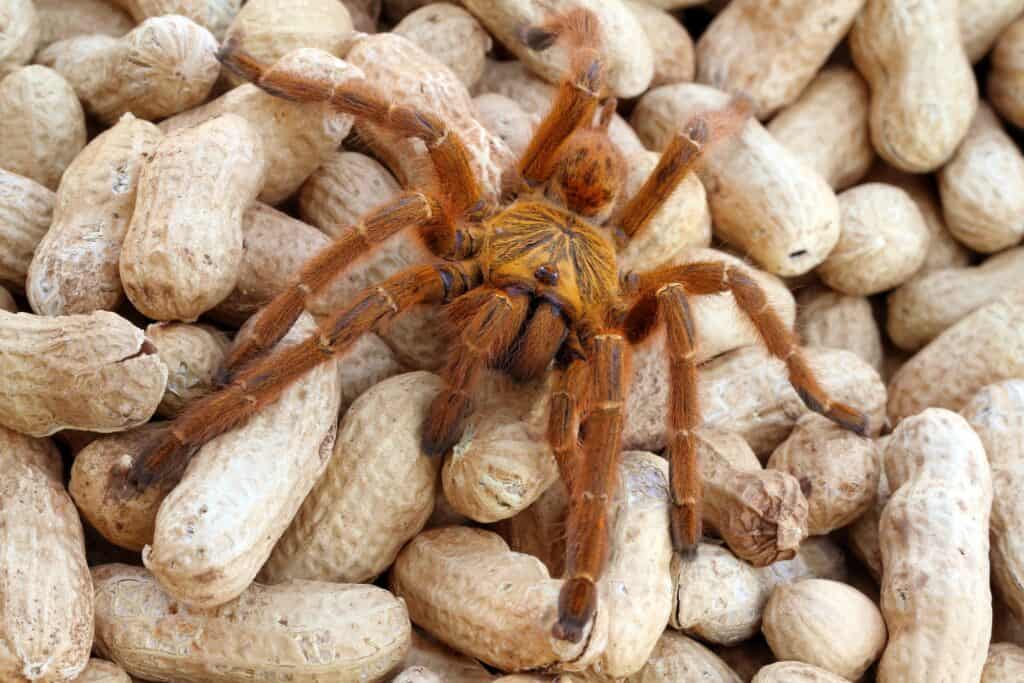
Adult female wasps hunt tarantulas to feed their larvae.
©Mark_Kostich/Shutterstock.com
Tarantula Hawk Wasps and Nectar
Both male and female tarantula hawk wasps feed on nectar to survive. While the females also hunt, they don’t actually consume tarantulas themselves. This means that they are nectarivorous insects that feed on flowers to sustain themselves. The wasps are usually most active during the summer because of the blooms, but they don’t like high heat. They most commonly drink the nectar of milkweed flowers, western soapberry trees, or mesquite trees.
Male wasps can be very territorial and often choose mating spots on top of tall flowers. There, they wait for females that are ready to reproduce to come along. They will become aggressive toward other males that approach their favorite spot. Conversely, female wasps are not very aggressive, and will rarely sting unless provoked.
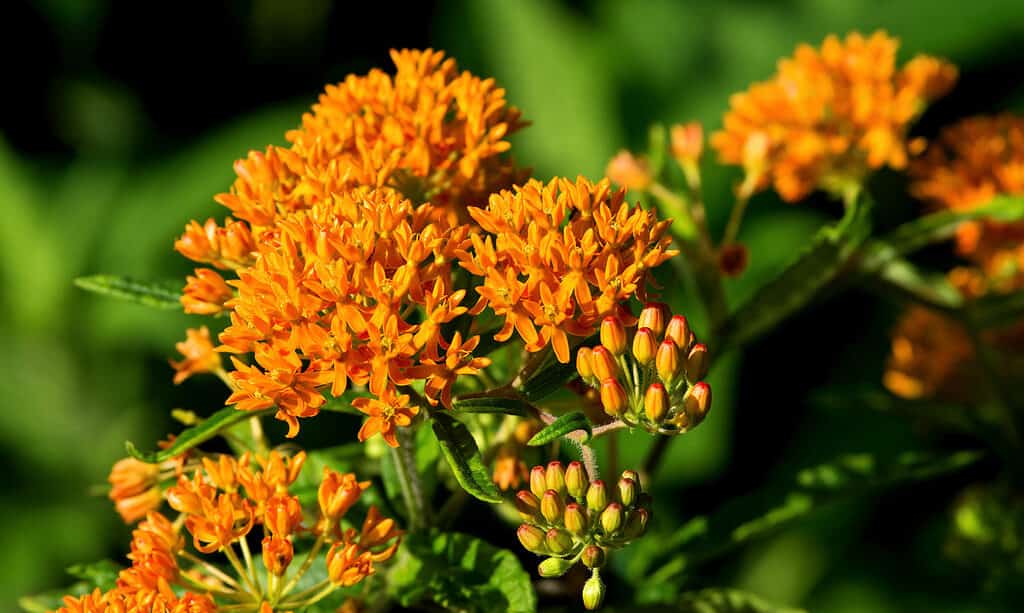
The wasps drink the nectar of milkweed flowers like this one.
©iStock.com/McKinneMike
Predator or Prey?
The bright colors on a tarantula hawk wasp, particularly their vivid wings, are for aposematism. That warns other animals and insects that the species has a powerful sting. Still, there is one animal desperate enough to prey on the tarantula hawk wasp, and that’s the greater roadrunner. Ironically, the greater roadrunner is the state bird of New Mexico.
Where Do These Wasps Live?
Tarantula hawk wasps live on every continent aside from Antarctica. In the United States, the wasps live in the southwest region in dry, desert areas. The northernmost place you can find them is north Utah, but you can easily find them south of there. The wasps live as far south as Argentina. They live in areas where it’s easy to find their prey — tarantulas. They are also commonly spotted living in and around the Grand Canyon because of the large population of tarantulas that live there.
How Bad Is Their Sting?
Knowing that tarantula hawk wasps paralyze their spider victims with their venom, you’re probably wondering how painful their sting is. On a positive note, the effect of their sting is not paralyzing on humans like it is on tarantulas. They also won’t lay their eggs in you afterward, thankfully, because that sounds absolutely terrifying.
Another positive — male wasps do not have a stinger, so your chances of being stung are cut in half. The species doesn’t sting often and usually won’t unless provoked. However, when a female tarantula hawk does sting a person, it is extremely painful.
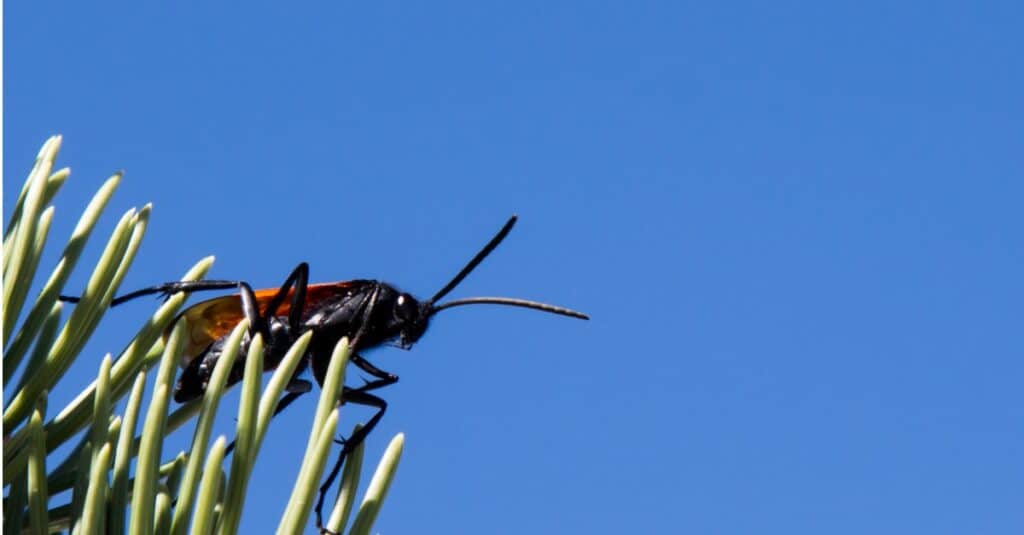
Male wasps do not have a stinger, so if you do run into a tarantula hawk, you better hope that it’s a male.
©iStock.com/KaraGrubis
The Pain Index for Stinging Insects
Justin O. Schmidt created the Pain Index for Stinging Insects. This was a chart that rated the sting of different insects on a chart from zero to four. A score of zero represented a completely benign sting, while a four made the victim feel ‘mostly dead’. To detail the insect stings accurately, Schmidt relied on data he gathered from others. Most importantly, he did his own research too, allowing himself to be stung over 1,000 times.
In those 1,000-plus trials, he experienced the sting of over 80 species of insects. He rated 78 species individually, adding notes to describe the sensation of the sting. He rated the sweat bee a 1.0 on the scale, claiming that the sting was “light” and “ephemeral”. The honey bee was rated as a 2.0 on the scale, coming in right in the middle.
The tarantula hawk wasp took a much higher ranking on the scale. It came in second place for the most painful insect sting on the planet. The species followed just behind the bullet ant, which received a score of 4.0+.
The tarantula hawk wasp earned a painful score of 4.0, which is the “mostly dead” rating on the chart. Schmidt described the sting as “blinding, fierce, shockingly electric. A running hair dryer has just been dropped in your bubble bath.” The only good thing about the tarantula hawk sting is that it doesn’t last long. This sting is extremely painful for five minutes, and then it’s over. Schmidt also said that the pain “shuts down one’s ability to do anything, except, perhaps, scream.” Sounds like a rather unpleasant five minutes, if you ask me.
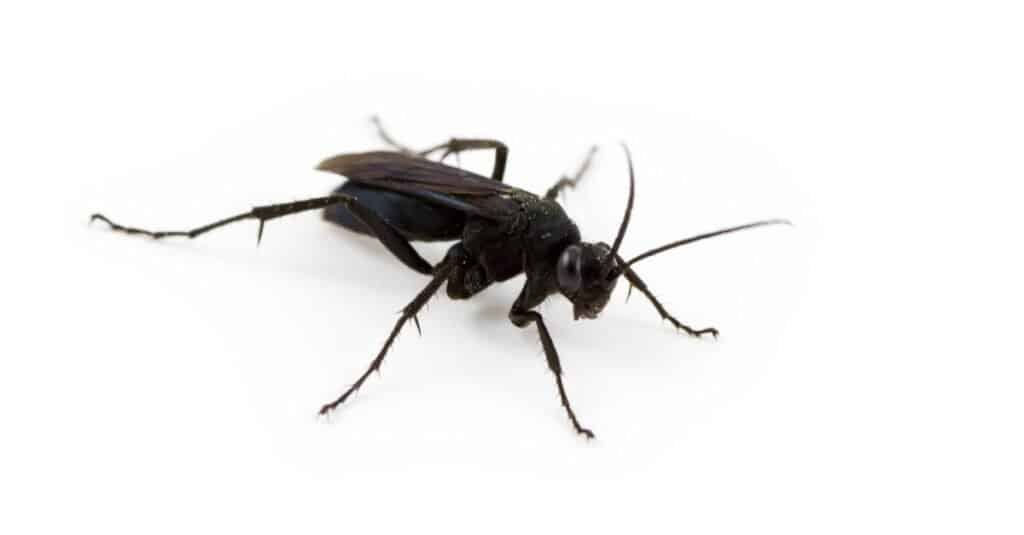
The tarantula hawk wasp earned a painful score of 4.0, which is the “mostly dead” rating on the chart.
©iStock.com/mguntow
The photo featured at the top of this post is © iStock.com/Rainbohm
Thank you for reading! Have some feedback for us? Contact the AZ Animals editorial team.



